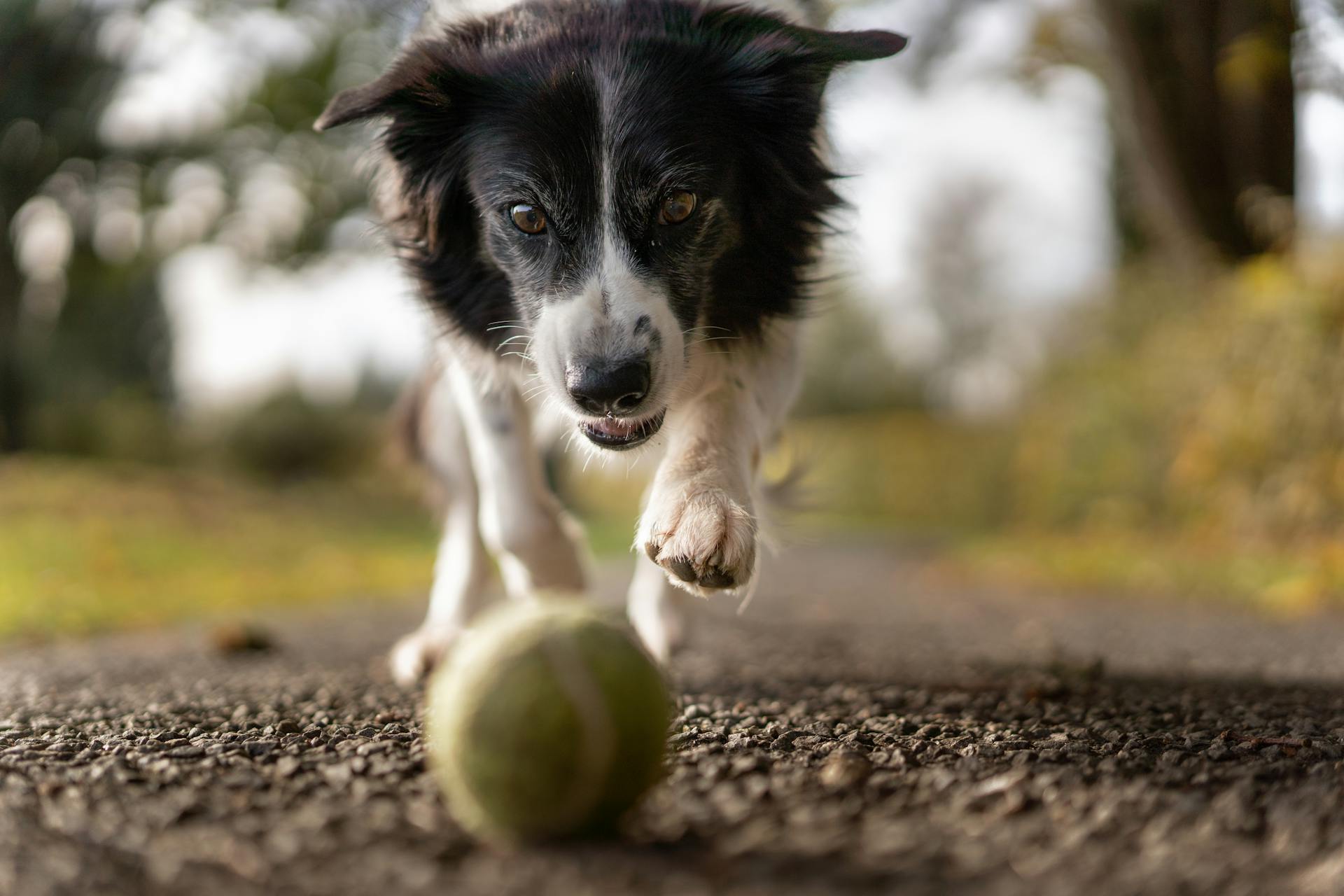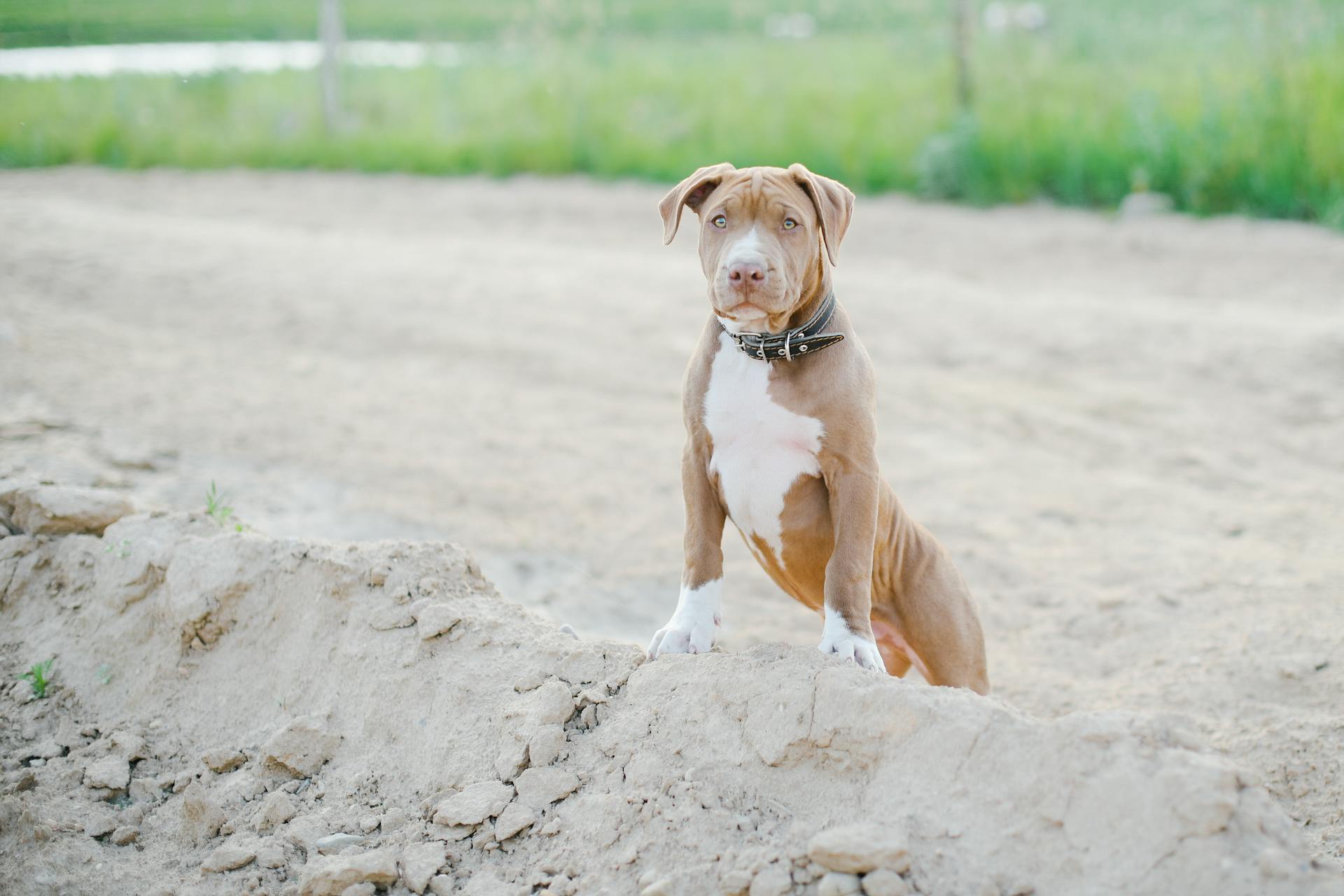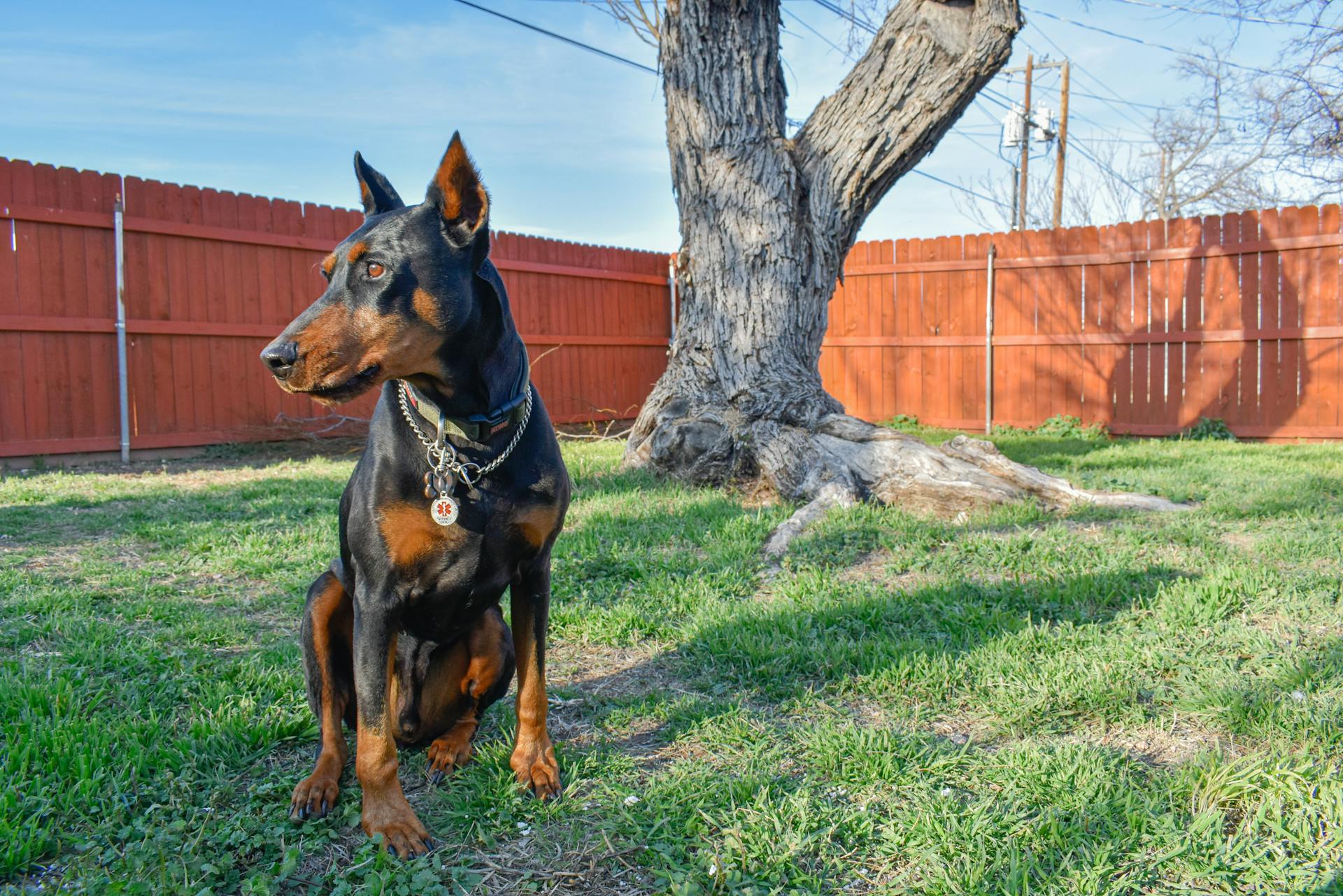
Prey drive in dogs is a natural instinct that's hardwired into their behavior. This primal urge is a leftover from their wild ancestors, who relied on hunting to survive.
Dogs with high prey drive are often described as "high-energy" or "feisty", as they have a strong desire to chase and catch small animals like squirrels, rabbits, or even cats. Some breeds, like Greyhounds and Whippets, are bred specifically for their speed and agility, making them natural hunters.
Prey drive can be a challenge for dog owners, especially if they have a pet that's prone to chasing small animals. In some cases, it can even lead to accidents, like a dog getting loose and running into the street or getting into a fight with a wild animal.
Managing prey drive requires a combination of exercise, training, and mental stimulation. By providing your dog with plenty of physical activity and engaging their mind with puzzle toys and obedience training, you can help satisfy their natural instincts and reduce the likelihood of unwanted behavior.
See what others are reading: Wild Dogs Eating
What Is
Prey drive is a natural desire of an animal to catch and kill another animal for food.
It differs from aggression, which is utilised for intimidation or as a threat.
Prey drive is adrenalin-fueled and offers a chemical reward for the dog.
The dog is reacting on impulse, rather than using the logical, thinking part of their brain, so familiarity and former friendships are often forgotten in the heat of the moment.
For many dogs, including greyhounds, the opportunity to express prey drive may enhance its intensity.
Dogs have been selectively bred for a variety of traits, often to help people to hunt or manage livestock, for somewhere between 3,000 and 7,000 years.
A dog with a high prey drive will throw themselves through brambles, ignoring pain and injury as they pursue a rabbit.
Domestic dogs are unlike any other predator on the planet.
Understanding Prey Drive in Dogs
Prey drive in dogs can be a complex and instinctual behavior, but understanding it can help you better manage your furry friend's natural instincts.
Prey drive is a natural and enjoyable part of doghood, and engaging in it can provide dogs with a sense of satisfaction and exhilaration. In fact, some dogs may exhibit prey drive behaviors even if they're not bred for it, as seen in the example of a lap-sitting Chihuahua chasing a squirrel.
Dogs with high prey drive may engage in various behaviors, including chasing wildlife, other pets, or even cars and bikes. They may also try to herd people or pets who are moving quickly, or obsessively track a scent.
Some breeds are more prone to high prey drive, such as Greyhounds, Terriers, Border Collies, Spaniels, Australian Shepherds, Pointers, Setters, Beagles, and Retrievers.
A key factor to consider is the intensity of the dog's desire to interact with prey animals, which can lead to frustration if not managed properly. In fact, frustration can be a major contributor to behavior problems, including aggression.
To minimize the risks associated with prey drive, it's essential to provide dogs with alternative outlets for their natural behaviors. This can include activities like nose work games, lure coursing, or Earthdog, which can help channel their energy and instincts in a positive way.
Prey drive is not just about the behavior itself, but also about the underlying motivations and needs of the dog. By understanding these factors, you can develop effective training plans and strategies to manage your dog's prey drive.
Related reading: Tail Chasing
Here are some common signs of prey drive in dogs:
- Chasing wildlife, such as squirrels, rabbits, and deer
- Chasing other pets, including smaller dogs or cats
- Chasing cars, bikes, and skateboarders
- Trying to herd people or pets who are moving quickly
- Digging in rodent holes
- Obsessively tracking a scent
- Fixating on birds, both on the ground and in flight
- Killing small animals
By recognizing these signs and understanding the underlying motivations of your dog's prey drive, you can take steps to manage their behavior and provide a safe and happy environment for both your dog and the people around them.
Managing Prey Drive
Managing a dog's prey drive requires a combination of careful observation, reward-based training, and safe exercise options.
Prey drive becomes problematic when it poses risks to people, other animals, or the dogs themselves. A dog can become so fixated on pursuing prey that they can put themselves at risk by not being aware of their surroundings.
The first step in addressing a dog's prey drive is to manage their behavior to prevent the dog from engaging in a potentially dangerous predatory sequence. This can be achieved through the use of leashes and barriers, as well as careful observation to determine what the individual dog feels the need to do.
Preventing a reduction in welfare and an increase in behavior problems requires a comprehensive approach that includes careful observation, reward-based training, and safe exercise options.
Dogs that exhibit some or all of the prey drive sequence include those within the sporting group, such as spaniels, retrievers, and pointers, as well as herding breeds like Australian Cattle Dogs and Border Collies.
To prevent your dog from dashing after animals, make sure they're only let outside in securely fenced areas. Dogs will often become stressed if they can spot prey, so a fence that isn't see-through is best.
Here are some safe exercise options for dogs with high prey drive:
- Nose work games at home like "find the toy"
- Organized scenting sports
- Lure coursing
- Earthdog
These activities allow a dog to engage in predatory behaviors in a safe and controlled environment, reducing the risk of injury to the dog or local wildlife.
Training and Containing
Management and observation are crucial in preventing a reduction in welfare and an increase in behavior problems in dogs with high prey drive.
To contain dogs with high prey drive, you need to go beyond just using leashes and barriers. This should be combined with careful observation to determine what the individual dog feels the need to do, as well as a reward-based training plan.
A strong "leave it" cue can help deter a dog from progressing through the full prey drive sequence. This can be taught through training and can be a valuable tool in managing a dog's prey drive.
Training is a learned behavior, and any training should be built on basic, established training and obedience. This is why it's recommended to wait until your dog is at least 6 months old before using a wireless system like SpotOn GPS Fence.
Preventing a dog from dashing after animals can be achieved by making sure they're only let outside in securely fenced areas. A see-through fence can actually stress your dog, so it's best to opt for a fence that isn't transparent.
Supervising your dog whenever they're outside and modifying their behavior by rewarding calm, non-chasing behaviors is a safer and more effective solution than using electric fences or shock collars.
Discover more: Electric Fence Shock Collars for Dogs
High Energy Dog Breeds and Prey Drive
Dogs with high energy levels often exhibit strong prey drive, which can be a challenge for owners. Certain breeds are naturally more prone to this behavior, including those within the sporting group, such as spaniels, retrievers, and pointers.
Herding breeds, like Australian Cattle Dogs and Border Collies, also tend to have high prey drive. Terrier breeds, including Border Terriers, Jack Russells, and Westies, are another group that often exhibits strong chasing instincts.
Dogs with high prey drive can range from mildly interested to almost uncontrollably driven to chase, and owners can help manage this behavior by providing a securely fenced area for their dog to exercise in.
Here's an interesting read: Group Dog Training Classes
What's Different About High?
High-prey-drive dogs are different in that they have a strong tendency to chase their prey, often staying focused on the stimulus even after it's out of reach. This can be a challenge for owners who want to keep small animals at home.
Most dogs have some level of prey drive, but high-prey-drive dogs take it to the next level. They'll often chase squirrels, chipmunks, rabbits, and other small creatures with reckless abandon.
If you've got a high-prey-drive dog, you're likely acutely aware of their strong instinct to chase. It's not just about the thrill of the hunt, but also about the scent, which can keep them focused on the tree long after the squirrel has scurried up to safety.
Dogs with high prey drive don't usually make a good addition to families with small animals at home, unless they've been raised together since they were young. Even then, it's a risk and not generally advised.
For more insights, see: Small Dog anti Bark Collar
High Energy Dog Breeds
Dogs with high prey drive are naturally energetic and always on the go. These breeds were originally bred for their hunting skills and have a strong instinct to chase and catch.
Some examples of high prey drive dog breeds include Greyhounds, Terriers, Border Collies, Spaniels, Australian Shepherds, Pointers, Setters, Beagles, and Retrievers.
These breeds require regular exercise and mental stimulation to keep them happy and healthy. Engaging in activities that mimic their natural prey drive, such as lure coursing or scent work, can help burn off excess energy.
Dogs within the sporting group, including spaniels, retrievers, and pointers, are prone to high energy levels and strong prey drive.
Herding breeds, like Australian Cattle Dogs and Border Collies, also exhibit high energy levels and a strong instinct to chase and herd.
Some breeds, like Terriers, have a strong instinct to dig and may enjoy channeling that desire into an organized sport, such as Earthdog.
Here are some high energy dog breeds that are prone to high prey drive:
- Greyhounds
- Terriers
- Border Collies
- Spaniels
- Australian Shepherds
- Pointers
- Setters
- Beagles
- Retrievers
These breeds require careful training and exercise to keep them safe and happy. By understanding their instinct and providing them with the right outlets, you can help your high energy dog breed thrive.
Frequently Asked Questions
What is prey drive in humans?
Prey drive in humans refers to the innate instinct to pursue or chase, which is a fundamental aspect of human behavior and can manifest in various forms, from playful games to adrenaline-fueled activities. This primal drive is shared with animals and plays a significant role in shaping human experiences and interactions.
Is it prey drive or predator drive?
Prey drive is the correct term, as it refers to a dog's instinct to chase and pursue potential prey, such as animals or moving objects. This natural behavior is a normal part of a dog's instincts and can be managed with proper training and exercise.
Is prey drive bad?
Prey drive is a natural instinct that can sometimes lead to problems, but with proper management, it can be a positive and healthy aspect of your dog's behavior. Managing your pup's prey drive requires understanding and implementing effective strategies to ensure their safety and well-being.
Sources
- https://www.petprofessionalguild.com/barks/barks-magazine-blog/how-to-manage-dogs-with-a-high-prey-drive/
- https://www.petmd.com/dog/behavior/prey-drive-dog
- https://www.yourvetonline.com/understanding-prey-drive/
- https://pridebites.com/blogs/barking-post-blog/all-about-your-dogs-prey-drive-and-how-to-manage-it
- https://spotonfence.com/blogs/training-tips/gps-fence-for-dogs-with-high-prey-drive
Featured Images: pexels.com


